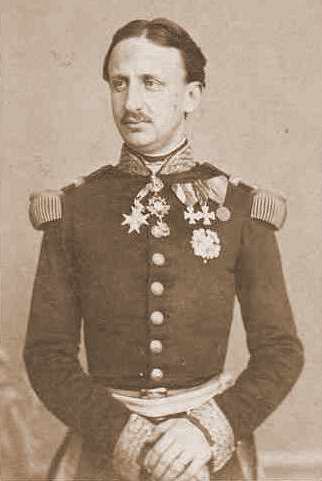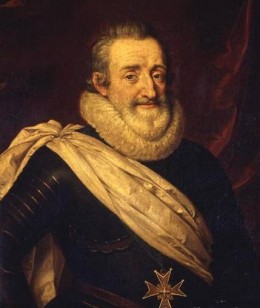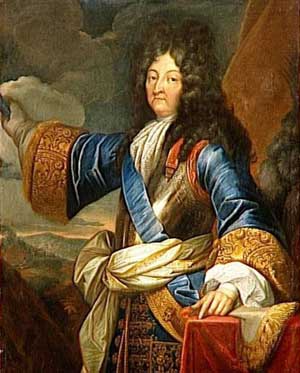So Louis XI is the first French Renaissance king and this is when the royalty starts to get interesting. Basically, being 'Renaissance' meant that the king put big emphasis on culture and development of the city.
For example Louis XI saw to it that printing presses were installed at the Sorbonne and a number of hôtels particuliers were erected. But the real Paris Renaissance was yet to come.
The Italian Renaissance soon infected France and Paris with interest in literature, art and architecture so by the late 15th century, Paris was in the midst of a cultural rebirth. With the beginning of François I's reign in 1515 Paris became a seat of power again as the King moved the court back to the city from the Loire Valley.
For the first time, the upper echelons of French society were exposed to new Renaissance ideas concerning science and geography as well as the value of secular over religious life.
The new wave of architecture was influenced by Michelangelo and Raphael and was supposed to reflect the majesty and splendor of a monarchy that was leering towards absolutism. Paris was supposed to be the capital of a powerful state, but all these ostentatious grandeur and demonstrations of strength had nothing on Protestantism.

Sadly by the 16th century saw the beginning of a very bleak period in French history. There was bloodshed in Paris again with the Wars of Religion (1562-98) while Francis II was king. The Protestant Reformation that swept across Europe in the 1530s was catalyzed in France by John Calvin who was exiled to Geneva.
The edict of January 1562, which granted the Protestants certain rights, escalated the situation as super-Catholic nobles (torn between a fidelity to their faith and a desire to maintain their power) opposed the edict violently. Paris remained very much under the control of the Catholics, and executions continued rapidly up to the outbreak of religious civil war.
The Wars of Religion involved three groups: the Huguenots (French Protestants supported by the English), the Catholic League and the Catholic king.The darkest hour of the conflict between the Huguenots and the Catholics was in 1572 with the St. Bartholomew's Day massacre of 3000 Huguenots.
The murders were instigated by the queen, Catherine de Medici, when prominent Huguenots were in Paris to celebrate the wedding of Henri of Navarre (later, King Henri IV).
The Wars of Religion greatly weakened the French monarchy, however it would be strong again under Henri IV.
The fighting was and unkind the monarchy, and on 7th May 1588 King Henri III, who had been quite sympathetic to the Huguenots, was forced to flee the Louvre for fear of the Catholic League. He was murdered a year later by a Dominican friar the day before his proposed attack on Paris.

Henri III was succeeded by Henri IV, the first of the Bourbon kings, who was a Huguenot when he ascended to the throne. Catholic Paris denied the new Protestant King access to the city. The siege of the capital continued for five years.
Finally Henri gave in and converted to Catholicism famously saying "Paris is well worth a mass". From then on he set about consolidating the monarchy's power and rebuilding Paris.
Henri IV's first order of duty was to put Paris back together after what had been almost 30 years of fighting. He initiated a new era of town planning, the modern Place des Vosges and Place Dauphine on Ile de la Cité being prime examples of his enthusiasm for construction.
It wasn't meant to be for long, though. A Catholic fanatic slew him in 1610 as his coach was paused in traffic along rue de la Ferronnerie.
Henry's reign was followed by a long line of Louis's, the first being his nine-year-old son, Louis XIII.
His mother, Marie de Medici, was named regent while Louis was too young to reign. She didn't do much apart from set about building the Palais du Luxembourg and the gardens she built for herself just outside the city wall.
Louis became king at the age of 16 but spent most of his reign in the shadow of his ruthless chief minister, Cardinal Richelieu. Everyone knew who was wearing the trousers in that king-subject relationship.
Richelieu is best known for his tireless efforts to establish an all-powerful monarchy and so he paved the way for the absolutism and egomania that characterized reign of Louis XIV.
In 1643 Louis XIV, known as le Roi Soleil (the Sun King), claimed the throne at only five years old and remained King until 1715. Throughout his reign, he demonstrated a penchant for battling and building that nearly bankrupted the country.

A series of civil wars ensued. They were so numerous and dragged on for such a long time, they are best amalgamated under the name the Fronde. In any case, only the result of them counts -- in order to maintain the peace, Louis XIV tightened his grip.
The Fronde was a dark hour for the city and its inhabitants — almost unimaginably, the death rate in the city at the time was higher than the birthrate.
To top off his massive ego, Louis XIV was also a wuss and fled to his ridiculously extravagant palace in Versailles out of fear of his citizens in 1682.
It is hard to write about positive things that Louis XIV did during his reign. Cleverly he took the court to Versailles and so consolidated his power by reducing his nobles to ineffectual sycophants squabbling for royal favor.
He mercilessly persecuted Protestants and managed to bankrupt France in a long series of wars with Holland Austria and England.
His successor, Louis XV, was no better - an oafish, incompetent fool who came to be universally despised.
His old-fashioned ancien régime began to be dangerously incompatible with the modern society of the 18th century, or the Age of Enlightenment.